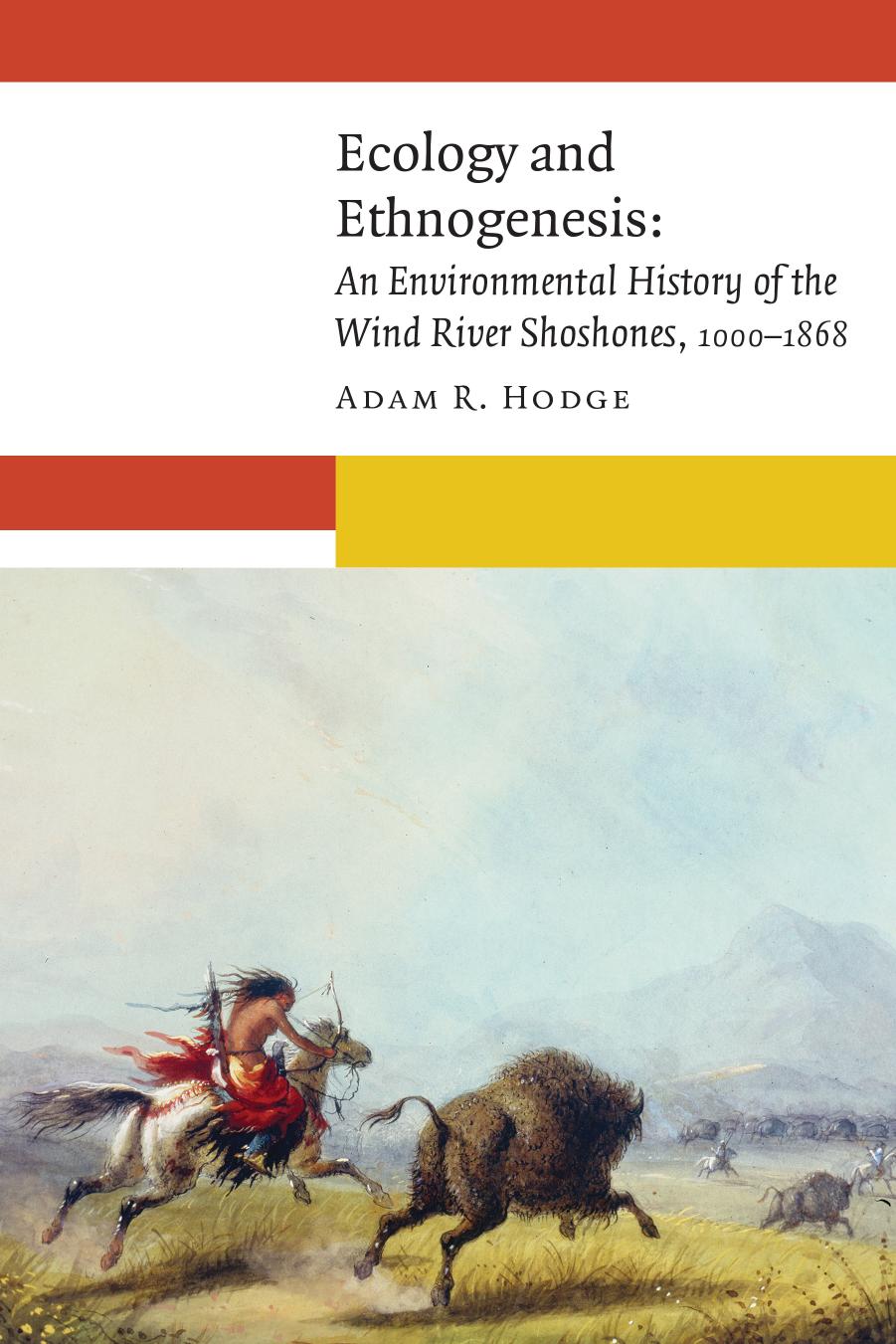Ecology and Ethnogenesis: An Environmental History of the Wind River Shoshones, 1000â1868 by Adam R. Hodge

Author:Adam R. Hodge [Hodge, Adam R.]
Language: eng
Format: epub, pdf
Tags: Social Science, Native American, Ethnic Studies, History, Native American Studies, HIS028000 History / Native American
ISBN: 9781496201515
Google: uBGLDwAAQBAJ
Publisher: U of Nebraska Press
Published: 2019-04-01T20:48:52+00:00
The period of 1780 to 1806 was challenging for the ancestors of the Eastern Shoshone people. The great smallpox pandemic of 1779â84 had devastated them, killing untold hundreds and compelling the survivors to all but withdraw from the Great Plains. Thereafter centralized in the Wyoming Basin and adjacent areas of what are now Idaho and Utah, the ancestors of the Eastern Shoshones engaged in diversified subsistence methods that exhibited a blend of Great Plains and Great Basin characteristics. Their reduced military strength, a product of the pandemic as well as their struggles to engage in trade that afforded access to firearms and ammunition, left them vulnerable to enemy raiders, such as the Blackfeet, Arapahos, and Hidatsas. But the ancestors of the Eastern Shoshones proved dynamic and resilient, utilizing broad-based hunting and gathering methods, adjusting their social and political organization, maintaining and expanding intertribal relationships, and forging new intercultural connections to subsist in the Intermountain West.
The arrival of European Americans in their country heralded a new era of Shoshone history, one that would contribute to further changes in the ways that Shoshones interacted with their environments. Although their encounters with Le Raye, Larocque, and Lewis and Clark produced little immediate change, they foreshadowed a vastly different world in which Shoshones would participate in fur-trade systems as well as engage with the effects of American overland travel to the Far West. Although Lewis and Clark encountered but a small portion of the Shoshone language family, the secondhand information that they obtained from their indigenous contacts effectively introduced Shoshones into American popular imagination. The explorers divided all Shoshones, whom they numbered at a total of 20,000 people, into two broad groups: the âAlitans of the Plainsâ and the âAlitans of the West.â The former included Comanches and the Shoshone groups who resided in or visited lands east of the Rockies while the latter encompassed all Shoshones who resided west of the Divide. The âAlitans of the Plainsâ comprised Wyoming Basin Shoshones, as many of their linguistic relatives, including those whom Lewis and Clark encountered in the Lemhi Valley, associated them with the Great Plains.96
One of the ways that the Lewis and Clark expedition and others who ventured into the West during the early nineteenth century affected Shoshones was by confirming rumors that the headwaters of the Missouri were rich in beaver and other fur-bearing animals. In fact, their glowing reports of the regionâs trapping potential preceded the Americansâ return to St. Louis, for during their journey down the Missouri in 1806 they met several parties of trappers heading upriver. One of Lewis and Clarkâs hunters, John Colter, left the expedition near the Knife River to join two men who planned to trap far up the Missouri.97 More would follow, and their activities would deeply affect the ancestors of the Eastern Shoshones and their lands.
Download
Ecology and Ethnogenesis: An Environmental History of the Wind River Shoshones, 1000â1868 by Adam R. Hodge.pdf
This site does not store any files on its server. We only index and link to content provided by other sites. Please contact the content providers to delete copyright contents if any and email us, we'll remove relevant links or contents immediately.
How to Do Nothing by Jenny Odell(3232)
A Forest Journey by John Perlin(3027)
The Plant Messiah by Carlos Magdalena(2883)
Babylon's Ark by Lawrence Anthony(2620)
The ESV Study Bible by Crossway Bibles(2502)
Energy Myths and Realities by Vaclav Smil(2438)
Fatal Storm by Rob Mundle(2171)
Abbey in America by Murray John A(2050)
Witness Tree by Lynda V. Mapes(1888)
Brokeback Mountain by Annie Proulx(1782)
Client Earth by James Thornton(1735)
Shadows on the Gulf by Rowan Jacobsen(1717)
Coming Back to Life by Joanna Macy(1685)
Cosmos by Carl Sagan(1681)
Water Rights and the Environment in the United States by John Burch(1643)
Mycelium Running: How Mushrooms Can Help Save the World by Paul Stamets(1642)
Ten Billion by Stephen Emmott(1611)
The overachievers by Robbins Alexandra(1528)
Ecological Intelligence by Daniel Goleman(1507)
